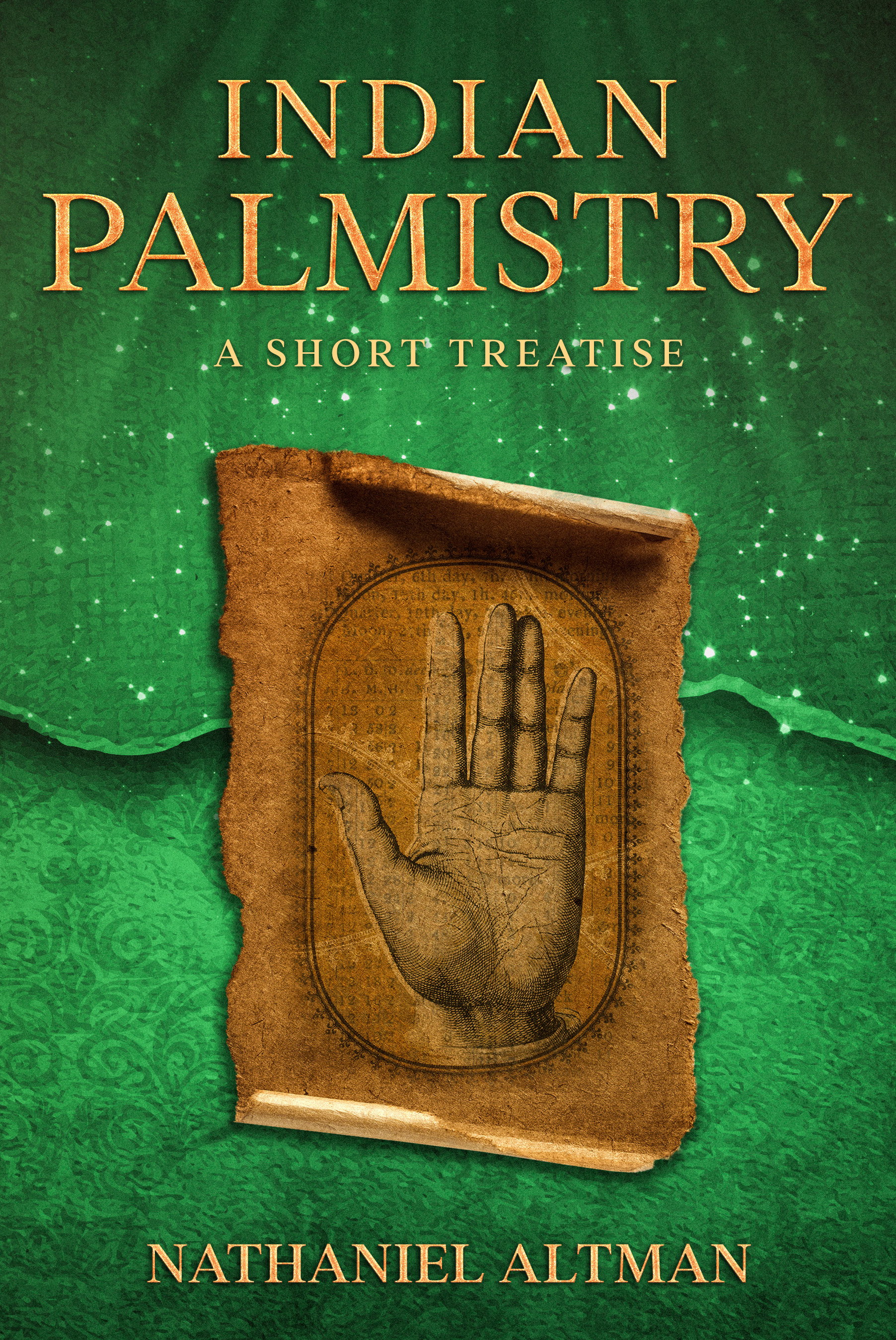

Introduction
1. The Palm and its Characteristics
2. Fingers and Nails
3. The Major Lines
4. The Minor Lines
5. Signs and Symbols
For Further Study
Afterword
Index
-
A portion of the material presented in this book was first published in The Little Giant Encyclopedia of Palmistry (Sterling Publishing, 1999). Recommended for those who have a basic understanding of Western palmistry, it is can be considered a companion volume to Chinese Palmistry; A Short Treatise.
-
Nathaniel Altman has been reading hands since 1969, and is recognized as one of the foremost hand analysis in the United States. He is the author of more than twenty books, including Sexual Palmistry and Palmistry: The Universal Guide.
-
Indian Palmistry: A Short Treatise. Gaupo Publishing / Kindle Direct Publishing, July 2020. Trade paperback edition (6" x 9", 111 pages, including index): $10.00. ISBN 978-0-9979720-6-1. To order Indian Palmistry, click here.
To return to the Home Page, click the image.